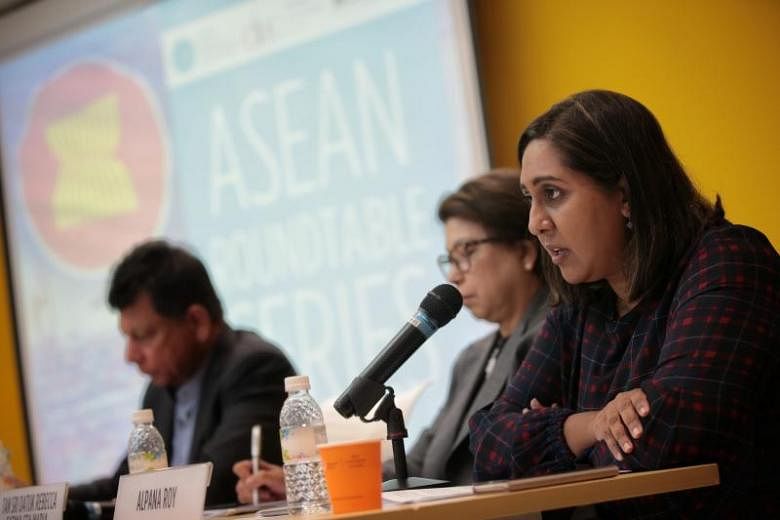SINGAPORE - Asean countries need stronger political will to tackle non-tariff barriers in the region, which range from high taxation to discriminatory policies the favour local manufacturers, and these tend to hurt small enterprises more, said a panel on Tuesday (April 2).
The grouping is at risk of failing to fulfil its potential unless more proactive action is taken on economic integration, which includes the removal of such barriers, added Mr Chris Humphrey, executive director of the European Union-Asean Business Council.
There are about 6,000 non-tariff measures in Asean - with many being potential barriers to trade - and this number continues to grow, he told an Asean roundtable discussion with six experts, organised by the CIMB Asean Research Institute.
Yet, not a single such barrier has been removed via Asean processes since 2015, the year the Asean Economic Community (AEC) was set up, Mr Humphrey noted. Under the AEC, member states are obliged to to allow the free flow of goods, services, capital and labour among their countries, in line with agreed terms.
Non-tariff barriers can inhibit trade, and panellist Kaewkamol Pitakdumrongkit gave the example of how foreign companies in Thailand have to set up two entities if they want to provide both warehousing and distribution services.
The reason is a licence is required for each of these operations, said the assistant professor at the S. Rajaratnam School of International Studies.
She added that such measures hurt microenterprises and small and medium-sized enterprises the most, as they they have fewer resources to absorb the added costs.
As a result, the participation of smaller businesses in transnational production networks are limited, she noted.
"Capacity training should be provided to Asean public officials to equip them to... simplify non-tariff measures," she said.
Other potential solutions include improving the systems that identify non-tariff measures, collecting information through an open and comprehensive database, said Asian Trade Centre trade policy analyst Juan Sebastian Cortes-Sanchez.
According to the centre's research, companies in the region note a wide and increasing array of challenges across sectors such as automotive, healthcare and agri-food.
While Asean has focused much of its effort in addressing obstacles relating to inconsistent product standards, other challenges remain, including an underdeveloped intellectual property regime.
Apart from having a database to combat the issue, there could also be a system to notify member states of new measures, as well as an institution set up to reduce non-tariff barriers, Mr Cortes-Sanchez said.
He added that Asean could also strengthen its work with the private sector to overcome the problem.
Ms Alpana Roy, director of Asean division at the Singapore Ministry of Trade and Industry said: "While Asean continues to work on addressing non-tariff measures, one possible way is to look at the live problems that businesses surface... to focus on the difficulties that businesses are facing in accessing Asean markets."
She added that non-tariff measures tend to be unilateral and efforts must be accompanied by the will to address them at the national level as well.
Mr Humphrey said that even as some non-tariff barriers have been resolved through Asean processes, this often means they are taken offline as a bilateral discussion between Asean member states, rather than being removed completely.
A complete removal, he said, requires all 10 countries' approval, including the party imposing the measure.
While the international community remains optimistic about this region's growth prospects, chairman of the CIMB Asean Research Institute, Tan Sri Dr Munir Majid said: "Projected numbers such as the size of the combined economy, the young and huge market and the boost (via) new technologies, will start to run thin if the Asean economy... continues to have cross-border impediments of all sorts."


